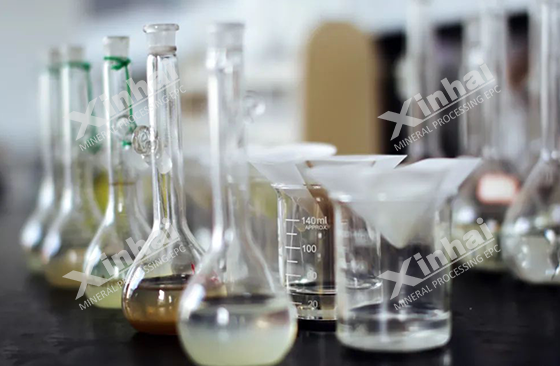
Copper flotation technology is the key process for extracting copper resources, and the selection and application of flotation reagents play a vital role in this process. Factors such as the surface activity, selectivity, dosage and environmental protection of the reagents directly affect the efficiency and effect of flotation. With the continuous advancement of science and technology, the development of copper flotation reagents is also constantly innovating, from traditional chemical reagents to intelligent and green reagents. These advances have not only improved the performance of flotation, but also promoted the sustainable development of the industry.

The surface activity of copper flotation reagents plays a major role in the flotation process of copper ore, mainly reflected in the adsorption mechanism of the reagents on the mineral surface. The adsorption mechanism of flotation reagents can be divided into three forms: chemical adsorption, physical adsorption and ion exchange. These mechanisms not only determine the interaction between the reagents and the mineral surface, but also directly affect the flotation effect of the mineral.
The surface activity of flotation reagents has an important influence on the flotation effect and wettability of minerals, including contact surface, surface free energy and surface polarity. The adsorption behavior of reagent molecules on the mineral surface is affected by their molecular structure, adsorption groups and surface charge. For example, the molecular structure of reagent molecules determines their affinity to the mineral surface, the adsorption group affects the chemical reaction between the reagent and the mineral, and the surface charge is related to the charge distribution of the reagent and its stability on the mineral surface.

Flotation reagents have different selectivities for different types of copper minerals (such as chalcopyrite, chalcocite, bornite, etc.). The main influencing factors are the surface chemical properties of the minerals, the affinity of the flotation reagents and the degree of mineral dissociation. The selectivity optimization strategies of flotation machines in mixed flotation systems include synergy, antagonism and inhibition. In addition, innovative flotation machine design strategies can improve the selectivity of target minerals while reducing the adsorption of gangue minerals.

The dosage of flotation reagents has a key influence on the flotation process of copper ore, which is directly related to the flotation recovery rate and enrichment ratio. Optimizing the dosage of reagents requires not only determining the optimal dosage range, but also avoiding the negative effects caused by excessive use. Dynamic optimization of reagent dosage is an effective means to improve flotation efficiency, which usually includes considering factors such as pulp composition, flotation time and operating conditions. With the help of flotation dynamic models and online detection technology, real-time automatic control of flotation reagent dosage can be achieved, thereby ensuring the best flotation effect and resource utilization under different operating conditions.

The use of copper flotation reagents may have certain impacts on the environment and human body, which are mainly manifested in the toxicity, biodegradability and persistence of the reagents. In order to reduce these negative effects, the development and application of green flotation reagents have become increasingly important. These reagents emphasize low toxicity, easy degradation and good recycling characteristics, which help to reduce the burden on the environment. In addition, the development of flotation wastewater treatment technology and reagent recovery technology has also greatly promoted environmental protection. These technologies can not only reduce the reagent residues in wastewater, but also effectively recover and reuse flotation reagents, thereby achieving the dual goals of resource recycling and environmental protection.
The use of copper flotation reagents may have certain impacts on the environment and human body, which are mainly manifested in the toxicity, biodegradability and persistence of the reagents. In order to reduce these negative effects, the development and application of green flotation reagents have become increasingly important. These reagents emphasize low toxicity, easy degradation and good recycling characteristics, which help to reduce the burden on the environment. In addition, the development of flotation wastewater treatment technology and reagent recovery technology has also greatly promoted environmental protection. These technologies can not only reduce the reagent residues in wastewater, but also effectively recover and reuse flotation reagents, thereby achieving the dual goals of resource recycling and environmental protection.

In general, the continuous progress of copper flotation reagents demonstrates the great potential in the field of flotation technology. From surface activity and selectivity optimization to environmental protection improvement, these breakthroughs and innovations not only optimize the flotation process, but also reduce the impact on the environment. Looking to the future, with the further development of intelligent, green and efficient technologies, copper flotation reagents will continue to lead the industry progress and provide more powerful support for the efficient and environmentally friendly utilization of copper resources.
To find out more about our products and solutions, please fill out the form below and one of our experts will get back to you shortly.